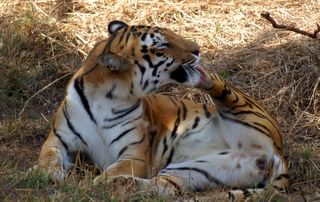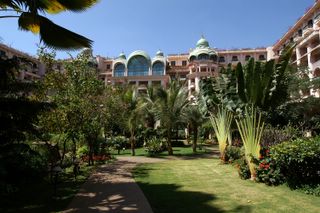
I was lucky enough to spend the month of February in Bangalore, India (on the company's dime).
I was staying in what they call a "serviced apartment". It's like an extended stay hotel in the US, but the apartments look more like real apartments. On a local colleague's (Vijay) advice I chose a place called Homestead. It turned out to be conveniently located (as far as nightlife and shopping is concerned), very quiet and peaceful, and rather professionally run. Talking to people who made different choices, it was as close to a jackpot as one can get.
The building was located on a private side-road, which is crucial in a city where cars are driven using the horn as much as the steering wheel. It was also a rich neighborhood, so the roads were quite decent and I could walk around till late night in the area without immediate danger to my belongings.
The picture shows the street right in front of the aparment.
























